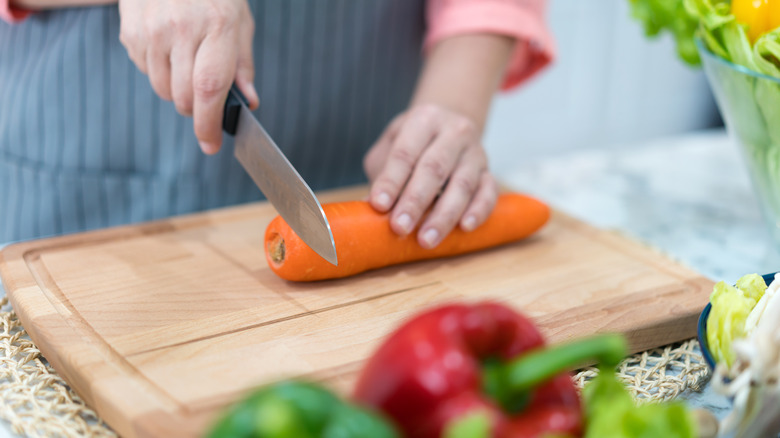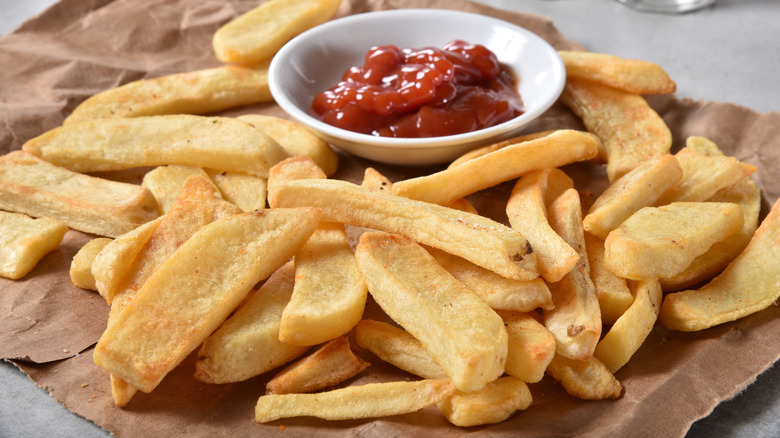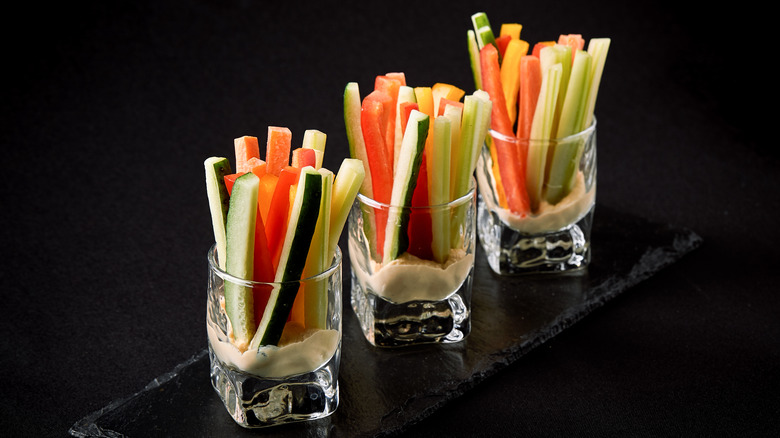The Slight Difference Between Baton And Batonnet Knife Cuts
Any stick cut is just as good as another stick cut, right? It's not even close for the well-trained chef, who might choose a specific type of stick cut based on what they're hoping to achieve with the final dish or garnish.
Different-sized cuts don't just play into a chef's style or cooking time — uniform cuts are vital for cooking your dish evenly — they create a texture, flavor, and mouthfeel. All of which are components that should blend seamlessly to create the overall perception of the food we're eating.
Residing toward the top of the stick size spectrum are the baton and the similarly-named batonnet knife cuts. These two powerful cuts pack a big punch if given the right setting, unlike their matchstick-sized baby sister, the julienne cut, which helps ingredients blend together. You'll want to master both the baton and batonnet cuts when you're brushing up on your basic knife skills and techniques, but what is the real difference between the two? Let's hash it out.
The biggest stick
Hanging out at the top of the stick-cut food chain is the baton cut. This great white of cuts usually clocks in at about ½ inch by ½ inch by 2 ½ inches. Given its size, this cut isn't used very often on its own, but it's still a key cut to have in your arsenal for steak fries. It's also the cut you'll want to master on your way to the perfect medium dice — approximately 8 mm.
Like any stick cut, you'll want to begin by trimming off the ends of your vegetable, known in chef parlance as "topping and tailing," before peeling your vegetable and squaring it off to form a large rectangle. This squaring-off step allows you to cut even the most misshapen of vegetables into smaller stacks of more uniform rectangles to achieve an even cut — and there are a lot of ways to use up your vegetable scraps.
The middle child
Residing just above her younger sister — the thin julienne cut — the batonnet cut measures approximately ¼ inch by ¼ inch by 2 inches. Some chefs take it up to 2 ½ inches depending on their needs, but most importantly this is the first size in the stick-cut chain that carries some weight to it. For example, when done with veggies, you can easily pick each piece up with your fingers, and it will likely hold its shape when dipping.
In French, the word batonnet translates to "small stick," and it's a cut often employed for French fries, crudités platters, stir fry, and those cute little carrots and celery sticks they toss on your plate of wings like an afterthought. It's a very useful cut and one you've likely already made on your way to executing a small dice, which is typically about 6 mm.
While the difference between these two cuts won't make or break a homemade dish, learning when to employ each technique could level up both the presentation and perception of your meals.


